Synergic Effects of Ordered Mesoporous Bifunctional Ionic Liquid: A Recyclable Catalyst to Access Chemoselective N-Protected Indoline-2,3-dione Analogous
Abstract
1. Introduction
2. Results
2.1. FT-IR Studies
2.2. Solid-State NMR Studies
2.3. Microscopic Studies
2.4. XRD Analysis
2.5. N2 Adsorption–Desorption
2.6. TGA Analysis
2.7. Activity Test of the Catalyst
The Effect of Reaction Temperature
2.8. Hammett Analysis for the Synergetic Effect of Catalyst
2.9. Reusability Test of the Catalyst
2.10. Plausible Mechanism
3. Conclusions
Supplementary Materials
Author Contributions
Funding
Data Availability Statement
Acknowledgments
Conflicts of Interest
References
- Singh, S.K.; Savoy, A.W. Ionic liquids synthesis and applications: An overview. J. Mol. Liq. 2019, 297, 112038. [Google Scholar] [CrossRef]
- Wasserscheid, P.; Keim, W. Ionic liquids—New “solutions” for transition metal catalysis. Angew. Chem. Int. Ed. 2000, 39, 3772–3789. [Google Scholar]
- Ni, B.; Headley, A.D. Ionic-Liquid-Supported (ILS) catalysts for asymmetric organic synthesis. Chem. Eur. J. 2010, 16, 4426–4436. [Google Scholar] [PubMed]
- Welton, T. Room-Temperature Ionic Liquids. Solvents for Synthesis and Catalysis. Chem. Rev. 1999, 99, 2071–2084. [Google Scholar] [CrossRef]
- Qureshi, Z.S.; Deshmukh, K.M.; Bhanage, B.M. Applications of ionic liquids in organic synthesis and catalysis. Clean Technol. Environ. Policy 2013, 16, 1487–1513. [Google Scholar] [CrossRef]
- Vekariya, R.L. A review of ionic liquids: Applications towards catalytic organic transformations. J. Mol. Liq. 2017, 227, 44–60. [Google Scholar] [CrossRef]
- Jamasbi, N.; Irankhah-Khanghah, M.; Shirini, F.; Tajik, H.; Langarudi, M.S. DABCO-based ionic liquids: Introduction of two met-al-free catalysts for one-pot synthesis of 1, 2, 4-triazolo [4, 3-a] pyrimidines and pyrido [2, 3-d] pyrimidines. New J. Chem. 2018, 42, 9016–9027. [Google Scholar]
- Sahoo, S.; Kumar, P.; Lefebvre, F.; Halligudi, S. Oxidative kinetic resolution of alcohols using chiral Mn–salen complex immobilized onto ionic liquid modified silica. Appl. Catal. A Gen. 2008, 354, 17–25. [Google Scholar] [CrossRef]
- Sharma, P.; Gupta, M. Silica functionalized sulphonic acid coated with ionic liquid: An efficient and recyclable heterogeneous catalyst for the one-pot synthesis of 1,4-dihydropyridines under solvent-free conditions. Green Chem. 2014, 17, 1100–1106. [Google Scholar] [CrossRef]
- Polshettiwar, V.; Varma, R.S. Green chemistry by nano-catalysis. Green Chem. 2010, 12, 743–754. [Google Scholar] [CrossRef]
- Polshettiwar, V.; Luque, R.; Fihri, A.; Zhu, H.; Bouhrara, M.; Basset, J.-M. Magnetically Recoverable Nanocatalysts. Chem. Rev. 2011, 111, 3036–3075. [Google Scholar] [CrossRef] [PubMed]
- Davarpanah, J.; Kiasat, A.R. Covalently anchored n-propyl-4-aza-1-azoniabicyclo [2.2.2] octane chloride on SBA-15 as a basic nanocatalyst for the synthesis of pyran heterocyclic compounds. RSC Adv. 2014, 4, 4403–4412. [Google Scholar]
- Li, J.; Qi, T.; Wang, L.; Liu, C.; Zhang, Y. Synthesis and characterization of imidazole-functionalized SBA-15 as an adsorbent of hexavalent chromium. Mater. Lett. 2007, 61, 3197–3200. [Google Scholar] [CrossRef]
- Badamali, S.K.; Luque, R.; Clark, J.H.; Breeden, S.W. Unprecedented oxidative properties of mesoporous silica materials: Towards microwave-assisted oxidation of lignin model compounds. Catal. Commun. 2012, 31, 1–4. [Google Scholar] [CrossRef]
- Wang, Y.; Caruso, F. Mesoporous Silica Spheres as Supports for Enzyme Immobilization and Encapsulation. Chem. Mater. 2005, 17, 953–961. [Google Scholar] [CrossRef]
- Costa, J.A.S.; de Jesus, R.A.; Santos, D.O.; Neris, J.B.; Figueiredo, R.T.; Paranhos, C.M. Synthesis, functionalization, and environmental application of silica-based mesoporous materials of the M41S and SBA-n families: A review. J. Environ. Chem. Eng. 2021, 9, 105259. [Google Scholar] [CrossRef]
- Xie, W.; Hu, L.; Yang, X. Basic ionic liquid supported on mesoporous SBA-15 silica as an efficient heterogeneous catalyst for bio-diesel production. Ind. Eng. Chem. Res. 2015, 54, 1505–1512. [Google Scholar]
- Li, R.; Song, H.; Wang, G.; Chen, J. Efficient and reusable SBA-15-immobilized Bronsted acidic ionic liquid for the ketalization of cyclohexanone with glycol. RSC Adv. 2018, 8, 7179–7185. [Google Scholar]
- Sheng, X.; Zhou, Y.; Yang, Y.; Zhang, Y.; Zhang, Z.; Zhou, S.; Fu, X.; Zhao, S. Synthesis of immobilized heteropolyanion-based ionic liquids on mesoporous silica SBA-15 as a heterogeneous catalyst for alkylation. RSC Adv. 2014, 4, 30697–30703. [Google Scholar] [CrossRef]
- Tao, Y.; Ma, M.; Li, W.; Zhou, L.; Li, L.; Guo, Z.; Zhang, C.; Lv, Z. Palladium covalently anchored imidazolium functionalized SBA-15: An efficient recoverable heterogeneous catalyst for the hydrocarboxylation of styrene. J. Solid State Chem. 2023, 330, 124471. [Google Scholar] [CrossRef]
- Rajabi, F.; Ebrahimi, A.Z.; Rabiee, A.; Pineda, A.; Luque, R. Synthesis and Characterization of Novel Pyridine Periodic Mesoporous Organosilicas and Its Catalytic Activity in the Knoevenagel Condensation Reaction. Materials 2020, 13, 1097. [Google Scholar] [CrossRef] [PubMed]
- Rajabi, F.; Burange, A.S.; Voskressensky, L.G.; Luque, R. Supported phosphine free bis-NHC palladium pincer complex: An efficient reusable nanocatalyst for Suzuki-Miyaura coupling reaction. Mol. Catal. 2021, 515, 111928. [Google Scholar] [CrossRef]
- Karimi, B.; Khorasani, M. Selectivity Adjustment of SBA-15 Based Tungstate Catalyst in Oxidation of Sulfides by Incorporating a Hydrophobic Organic Group inside the Mesochannels. ACS Catal. 2013, 3, 1657–1664. [Google Scholar] [CrossRef]
- Liu, T.; Liu, X.; Bai, X. Preparation of SBA-15 supported Ru nanocatalysts by electrostatic adsorption–ultrasonic in situ reduction method and its catalytic performance for hydrogen storage of N-ethylcarbazole. Environ. Sci. Pollut. Res. 2023, 30, 98034–98047. [Google Scholar] [CrossRef]
- Navik, R.; Wang, E.; Ding, X.; Qiu, K.; Li, J. Atmospheric carbon dioxide capture by adsorption on amine-functionalized silica composites: A review. Environ. Chem. Lett. 2024, 22, 1791–1830. [Google Scholar] [CrossRef]
- Ekeoma, B.C.; Yusuf, M.; Johari, K.; Abdullah, B. Mesoporous silica supported Ni-based catalysts for methane dry reforming: A review of recent studies. Int. J. Hydrogen Energy 2022, 47, 41596–41620. [Google Scholar] [CrossRef]
- Elumalai, V.; Dharmalingam, S. Synthesis characterization and performance evaluation of ionic liquid immobilized SBA-15/quaternised polysulfone composite membrane for alkaline fuel cell. Microporous Mesoporous Mater. 2016, 236, 260–268. [Google Scholar]
- Vijayakumar, E.; Sangeetha, D. A quaternized mesoporous silica/polysulfone composite membrane for an efficient alkaline fuel cell application. RSC Adv. 2015, 5, 42828–42835. [Google Scholar] [CrossRef]
- Li, H.; Chen, J.; Wan, Y.; Chai, W.; Zhang, F.; Lu, Y. Aqueous medium Ullmann reaction over a novel Pd/Ph–Al-MCM-41 as a new route of clean organic synthesis. Green Chem. 2006, 9, 273–280. [Google Scholar] [CrossRef]
- Reichhardt, N.V.; Guillet-Nicolas, R.; Thommes, M.; Klösgen, B.; Nylander, T.; Kleitz, F.; Alfredsson, V. Mapping the location of grafted PNIPAAM in mesoporous SBA-15 silica using gas adsorption analysis. Phys. Chem. Chem. Phys. 2012, 14, 5651–5661. [Google Scholar] [CrossRef]
- Kingchok, S.; Pornsuwan, S. Comparison of spherical and rod-like morphologies of SBA-15 for enzyme immobilization. J. Porous Mater. 2020, 27, 1547–1557. [Google Scholar]
- Batail, N.; Bendjeriou, A.; Djakovitch, L.; Dufaud, V. Larock indole synthesis using palladium complexes immobilized onto mesoporous silica. Appl. Catal. A Gen. 2010, 388, 179–187. [Google Scholar]
- Chen, S.Y.; Huang, C.Y.; Yokoi, T.; Tang, C.Y.; Huang, S.J.; Lee, J.J.; Chan, J.C.C.; Tatsumi, T.; Cheng, S. Synthesis and catalytic activity of amino-functionalized SBA-15 materials with controllable channel lengths and amino loadings. J. Mater. Chem. 2011, 22, 2233–2243. [Google Scholar] [CrossRef]
- Rostamnia, S.; Doustkhah, E.; Zeynizadeh, B. Cationic modification of SBA-15 pore walls for Pd supporting: Pd@ SBA-15/ILDABCO as a catalyst for Suzuki coupling in water medium. Microporous Mesoporous Mater. 2016, 222, 87–93. [Google Scholar]
- Li, Q.-F.; Yue, D.; Lu, W.; Zhang, X.; Li, C.; Wang, Z. Hybrid luminescence materials assembled by [Ln(DPA)3]3− and mesoporous host through ion-pairing interactions with high quantum efficiencies and long lifetimes. Sci. Rep. 2015, 5, 8385. [Google Scholar] [CrossRef]
- Yue, C.; Zhang, P.; Wu, H.; Fan, M.; Jiang, P. Novel Bronsted-Lewis Acid Heterogeneous Catalyst: Functionalized Imidazolium Ferric Salts@SBA-15 for Efficient Production of Biodiesel. ChemistrySelect 2019, 4, 11275–11281. [Google Scholar]
- Finn, M.; An, N.; Voutchkova-Kostal, A. Immobilization of imidazolium ionic liquids on hydrotalcites using silane linkers: Retardation of memory effect. RSC Adv. 2015, 5, 13016–13020. [Google Scholar]
- Sun, L.-B.; Liu, X.-Q.; Zhou, H.-C. Design and fabrication of mesoporous heterogeneous basic catalysts. Chem. Soc. Rev. 2015, 44, 5092–5147. [Google Scholar] [CrossRef]
- Jiang, X.; Cao, Y.; Wang, Y.; Liu, L.; Shen, F.; Wang, R. A unique approach to the concise synthesis of highly optically active spi-rooxazolines and the discovery of a more potent oxindole-type phytoalexin analog. J. Am. Chem. Soc. 2010, 13, 15328–15333. [Google Scholar]
- Valeur, E.; Bradley, M. Amide bond formation: Beyond the myth of coupling reagents. Chem. Soc. Rev. 2008, 38, 606–631. [Google Scholar] [CrossRef]
- Humphrey, J.M.; Chamberlin, A.R. Chemical Synthesis of Natural Product Peptides: Coupling Methods for the Incorporation of Noncoded Amino Acids into Peptides. Chem. Rev. 1997, 97, 2243–2266. [Google Scholar] [CrossRef] [PubMed]
- Watanabe, K.; Yamagiwa, N.; Torisawa, Y. Cyclopentyl Methyl Ether as a New and Alternative Process Solvent. Org. Process. Res. Dev. 2007, 11, 251–258. [Google Scholar] [CrossRef]
- Barrett, M.J.; Davies, P.W.; Grainger, R.S. Regioselective functionalization of dibenzothiophenes through gold-catalyzed intermo-lecular alkyne oxyarylation. Org. Biomol. Chem. 2015, 13, 8676–8686. [Google Scholar] [PubMed]
- Song, H.; Rioux, R.M.; Hoefelmeyer, J.D.; Komor, R.; Niesz, K.; Grass, M.; Yang, P.; Somorjai, G.A. Hydrothermal Growth of Mesoporous SBA-15 Silica in the Presence of PVP-Stabilized Pt Nanoparticles: Synthesis, Characterization, and Catalytic Properties. J. Am. Chem. Soc. 2006, 128, 3027–3037. [Google Scholar] [CrossRef] [PubMed]
- Zeidan, R.K.; Hwang, S.; Davis, M.E. Multifunctional Heterogeneous Catalysts: SBA-15-Containing Primary Amines and Sulfonic Acids. Angew. Chem. 2006, 118, 6480–6483. [Google Scholar] [CrossRef]
- Huh, S.; Chen, H.; Wiench, J.W.; Pruski, M.; Lin, V.S. Cooperative Catalysis by General Acid and Base Bifunctionalized Mesoporous Silica Nanospheres. Angew. Chem. 2005, 117, 1860–1864. [Google Scholar] [CrossRef]
- Margelefsky, E.L.; Zeidan, R.K.; Davis, M.E. Cooperative catalysis by silica-supported organic functional groups. Chem. Soc. Rev. 2008, 37, 1118–1126. [Google Scholar] [CrossRef]
- Sulpizi, M.; Gaigeot, M.-P.; Sprik, M. The Silica–Water Interface: How the Silanols Determine the Surface Acidity and Modulate the Water Properties. J. Chem. Theory Comput. 2012, 8, 1037–1047. [Google Scholar] [CrossRef]
- Castejon, H.; Wiberg, K.B. Solvent Effects on Methyl Transfer Reactions. 1. The Menshutkin Reaction. J. Am. Chem. Soc. 1999, 121, 2139–2146. [Google Scholar] [CrossRef]
- De Vos, D.; Vankelecom, I.F.; Jacobs, P.A. (Eds.) Chiral Catalyst Immobilization and Recycling; John Wiley & Sons: Hoboken, NJ, USA, 2008. [Google Scholar]
- Zhang, W.; Wang, Q.; Wu, H.; Wu, P.; He, M. A highly ordered mesoporous polymer supported imidazolium-based ionic liquid: An efficient catalyst for cycloaddition of CO2 with epoxides to produce cyclic carbonates. Green Chem. 2014, 16, 4767–4774. [Google Scholar] [CrossRef]
- Trewyn, B.G.; Slowing, I.I.; Giri, S.; Chen, H.T.; Lin, V.S. Synthesis and functionalization of a mesoporous silica nanoparticle based on the sol-gel process and applications in controlled release. Acc. Chem. Res. 2007, 40, 846–853. [Google Scholar]
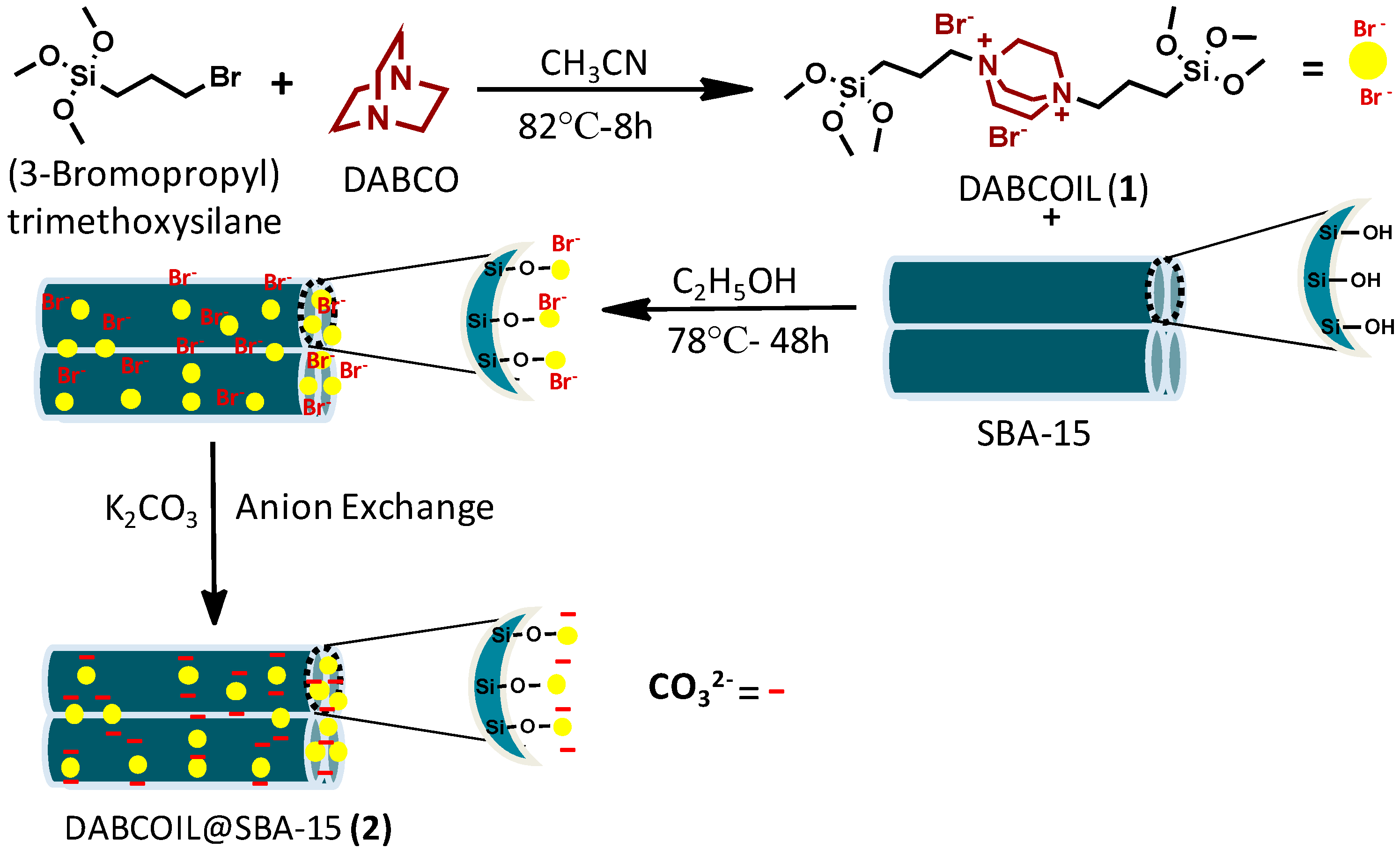
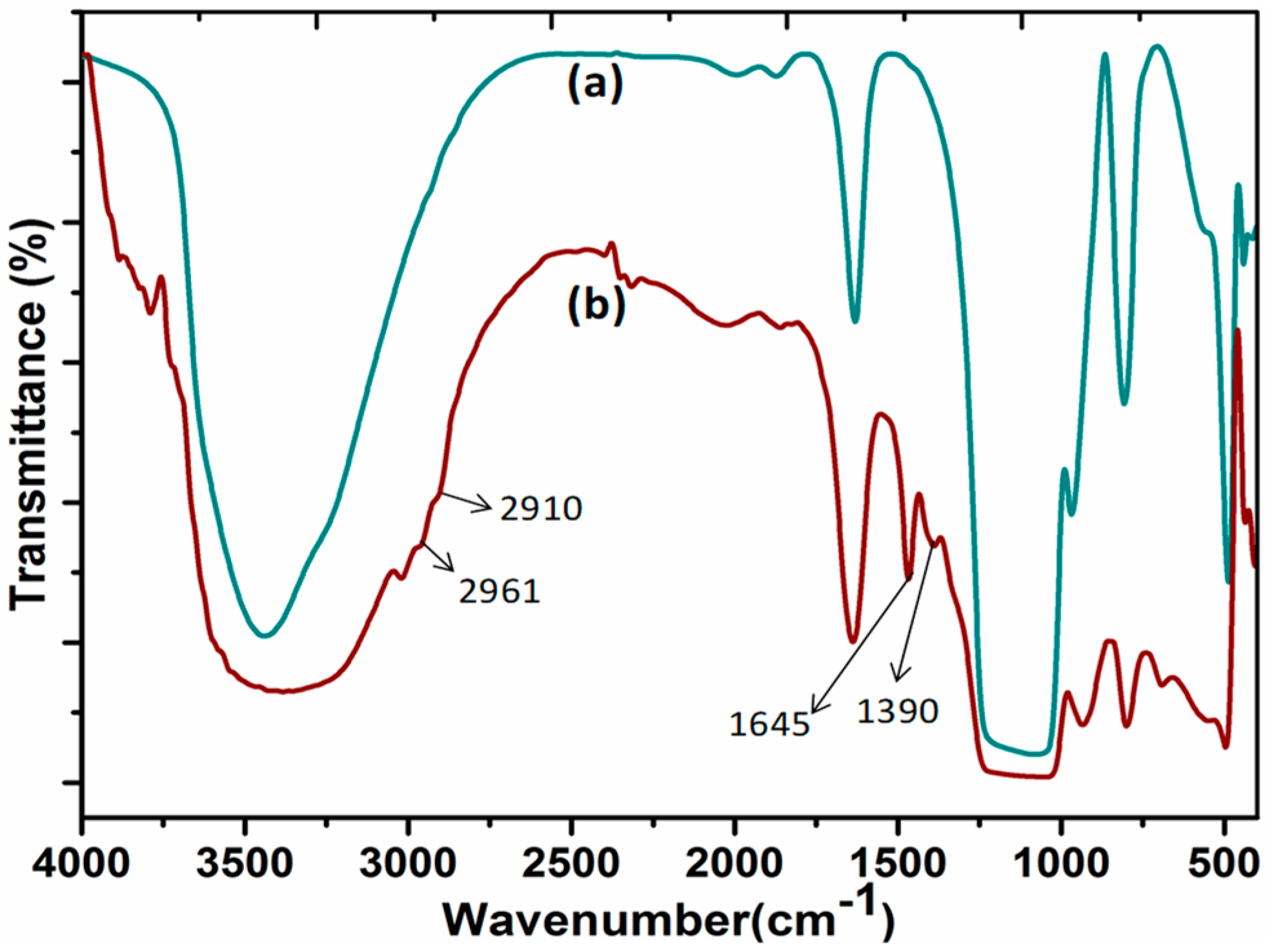
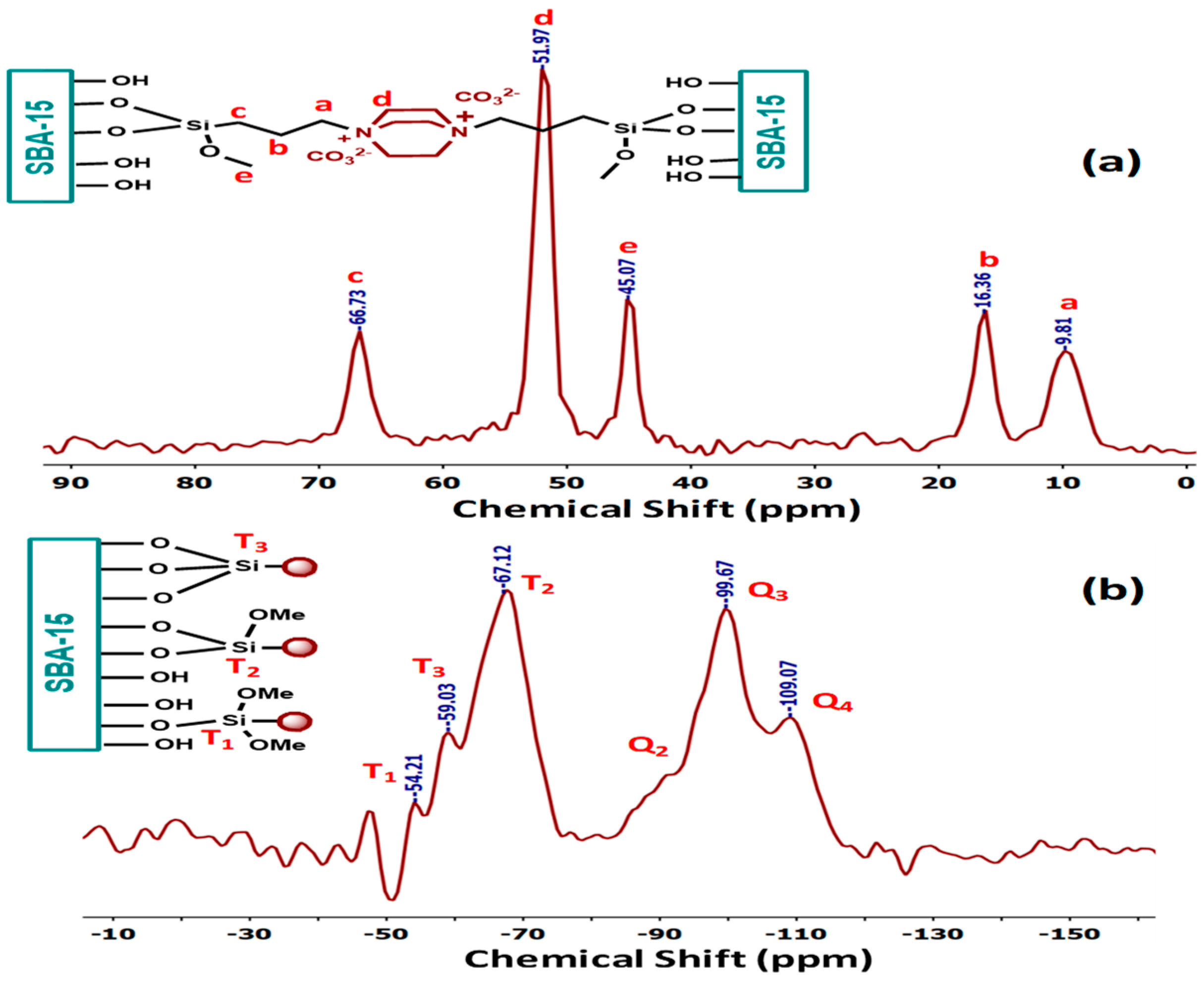
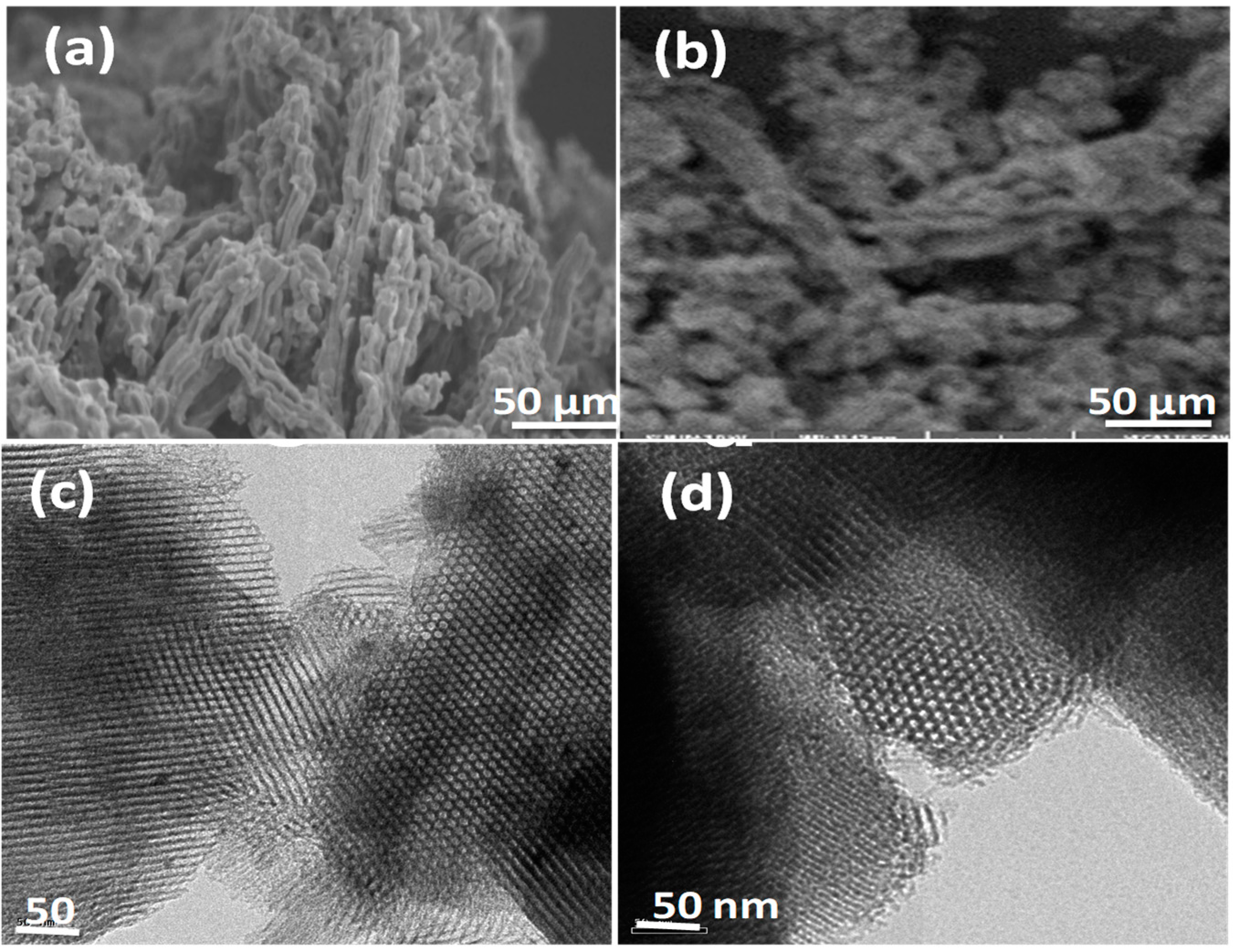
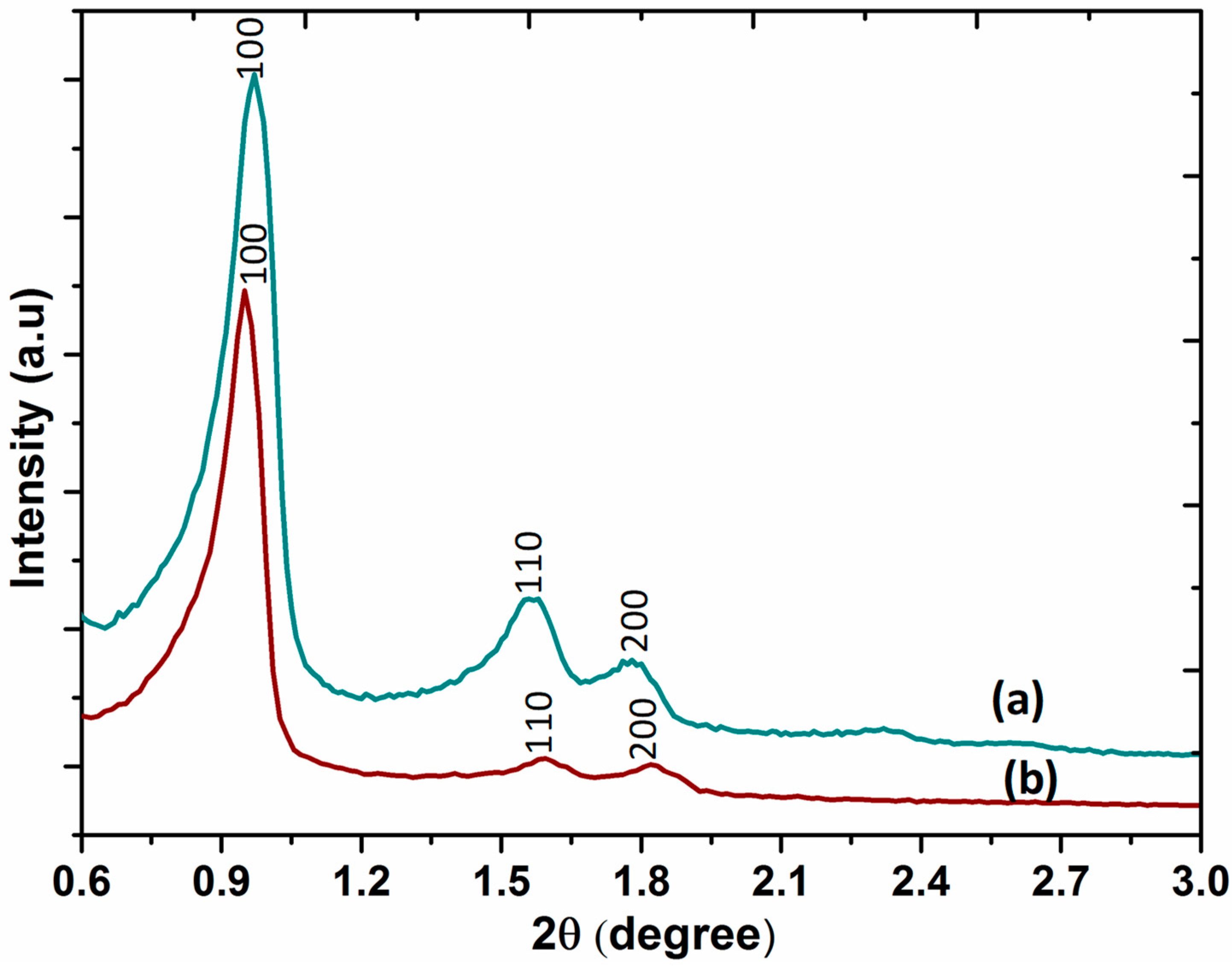
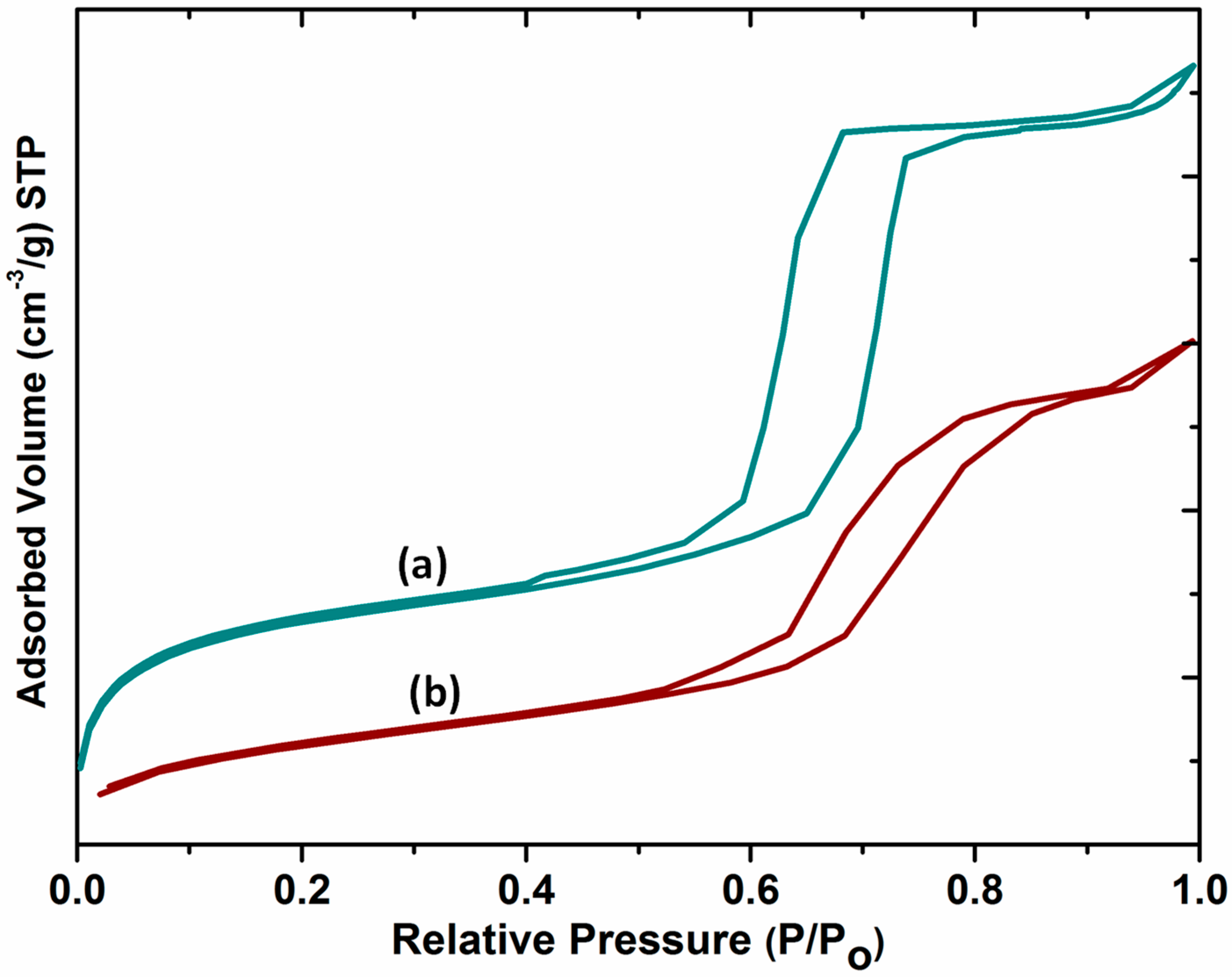
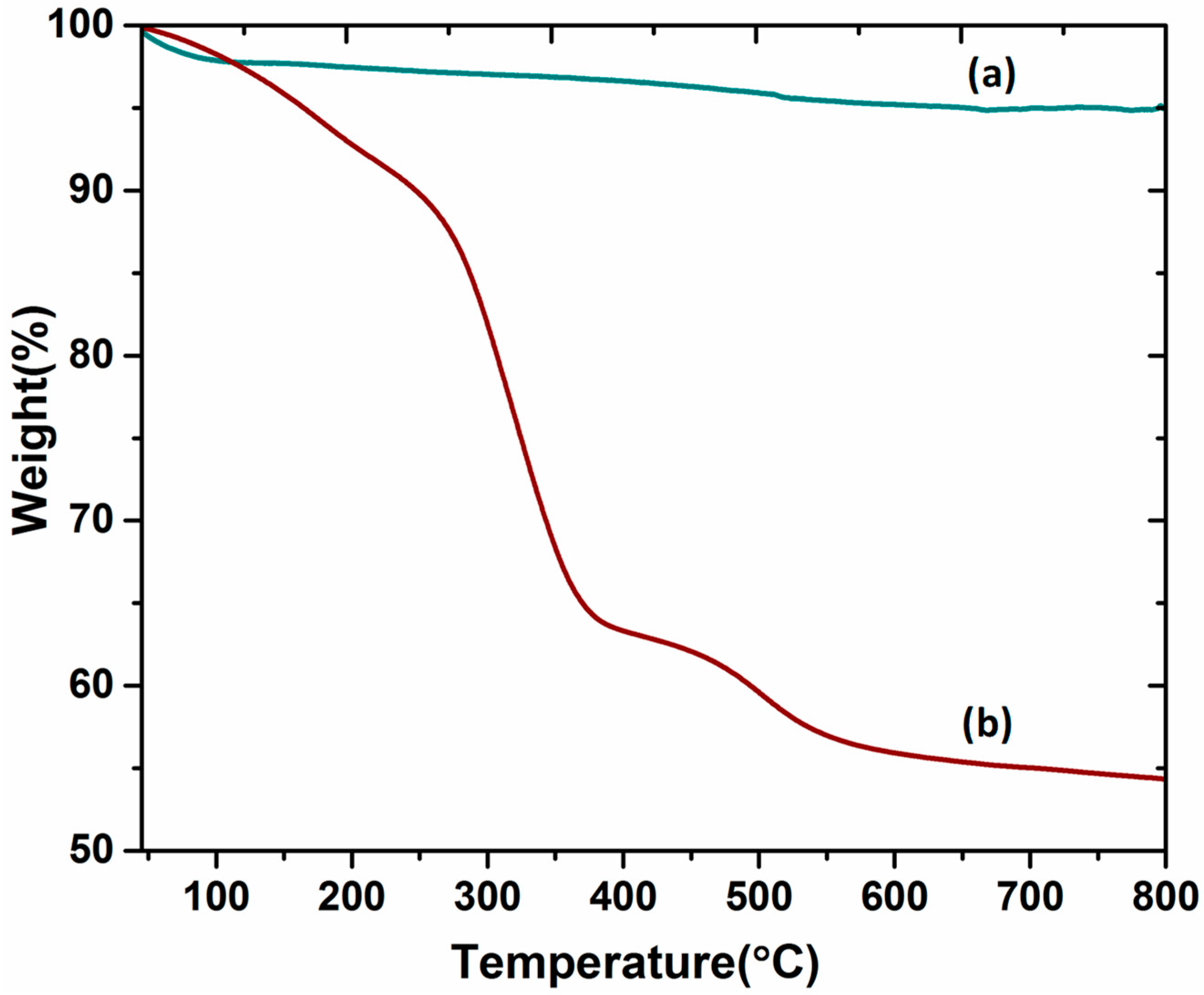

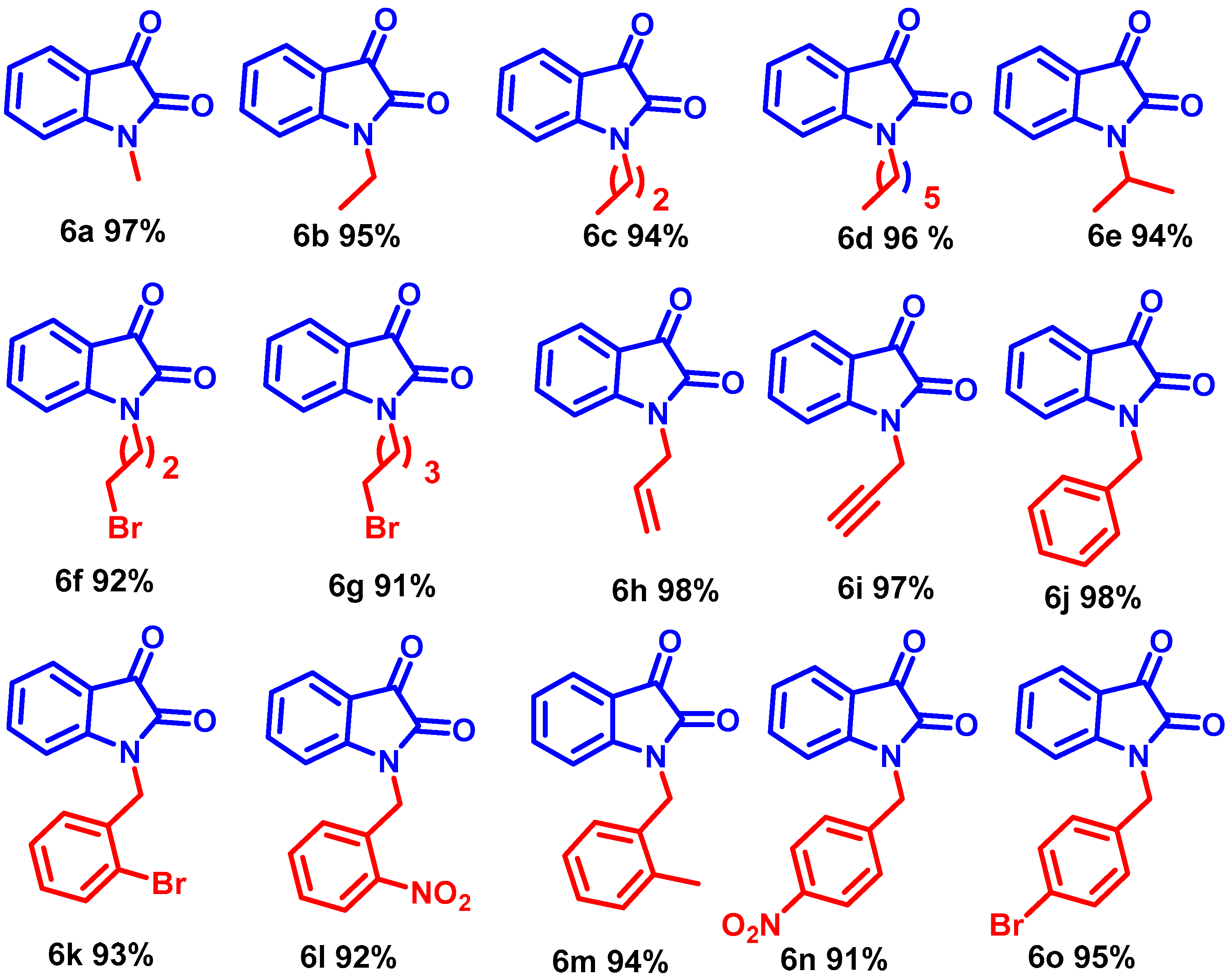
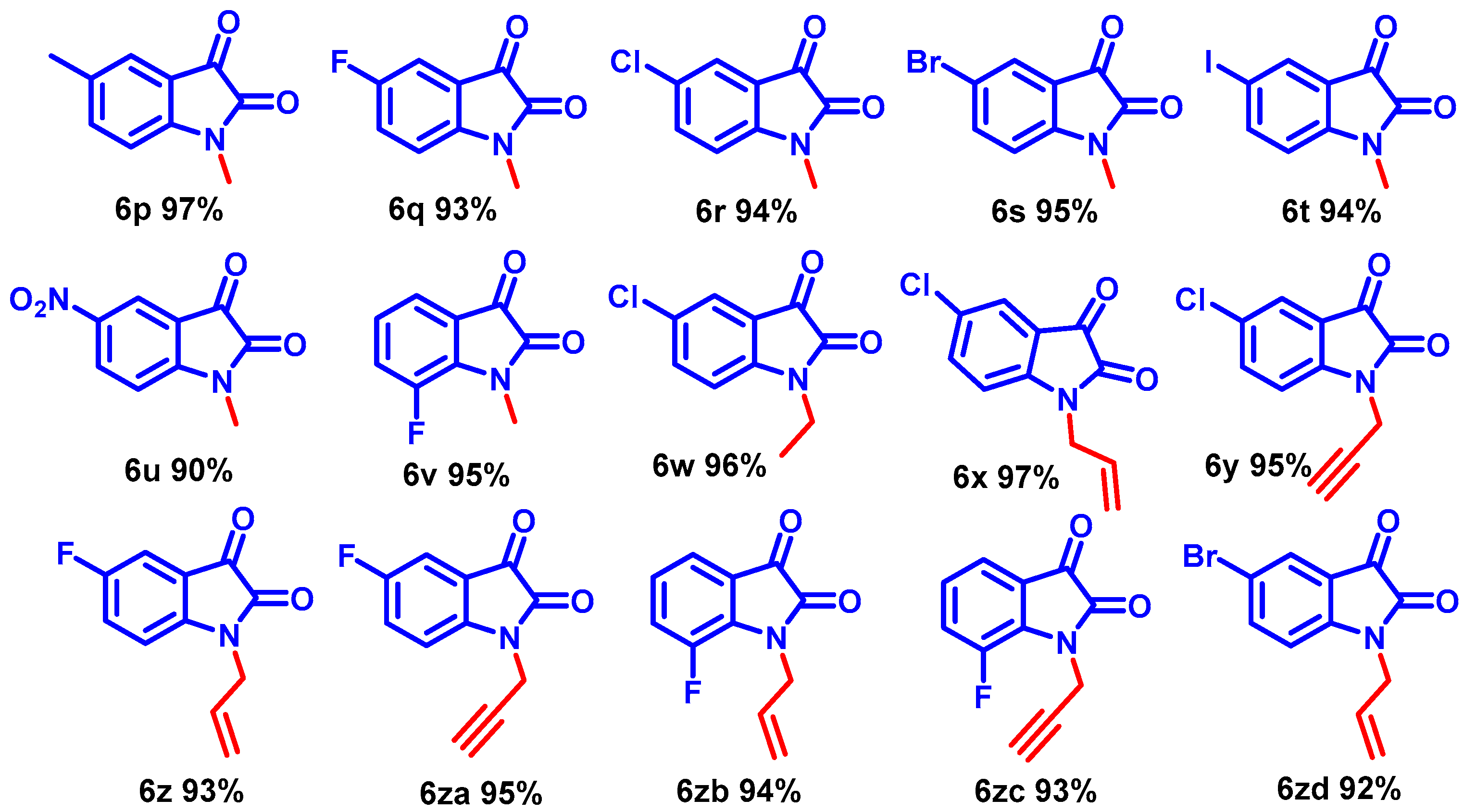
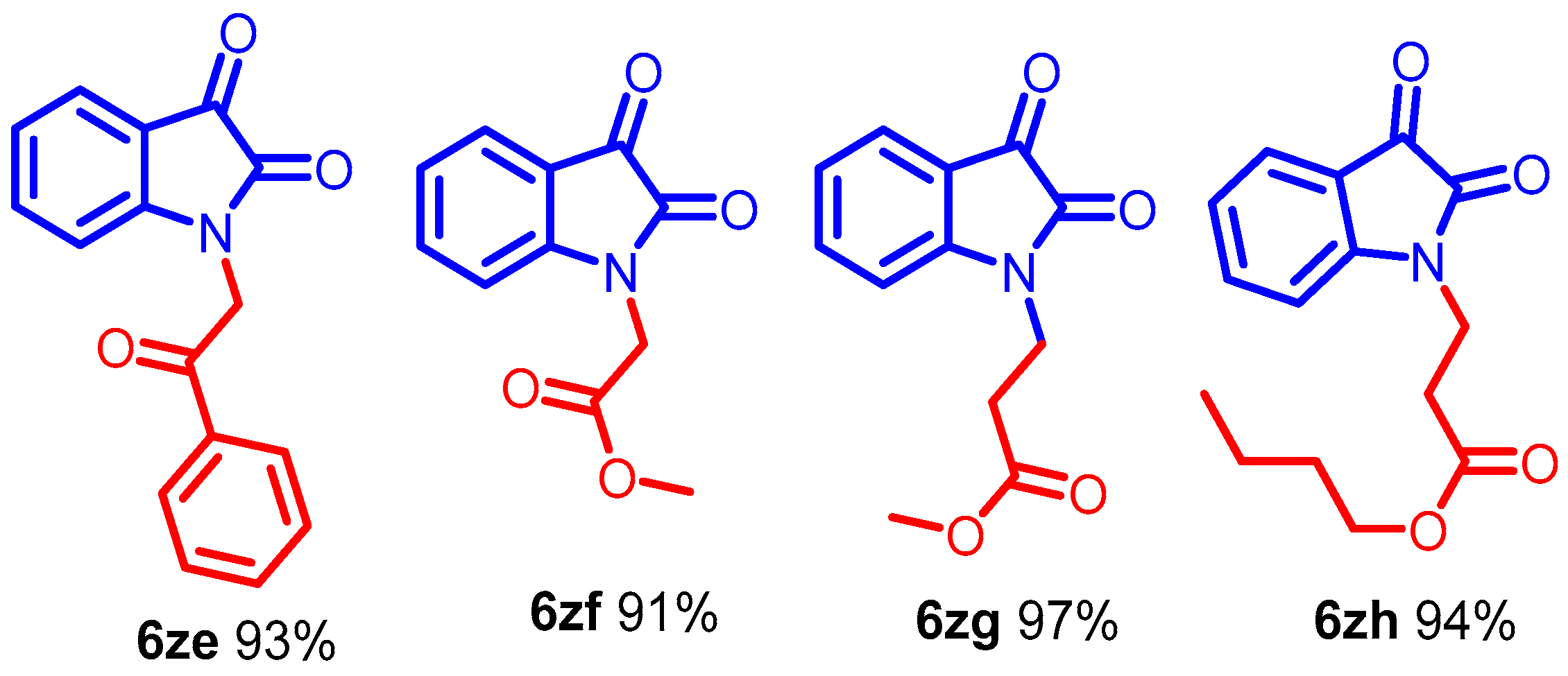


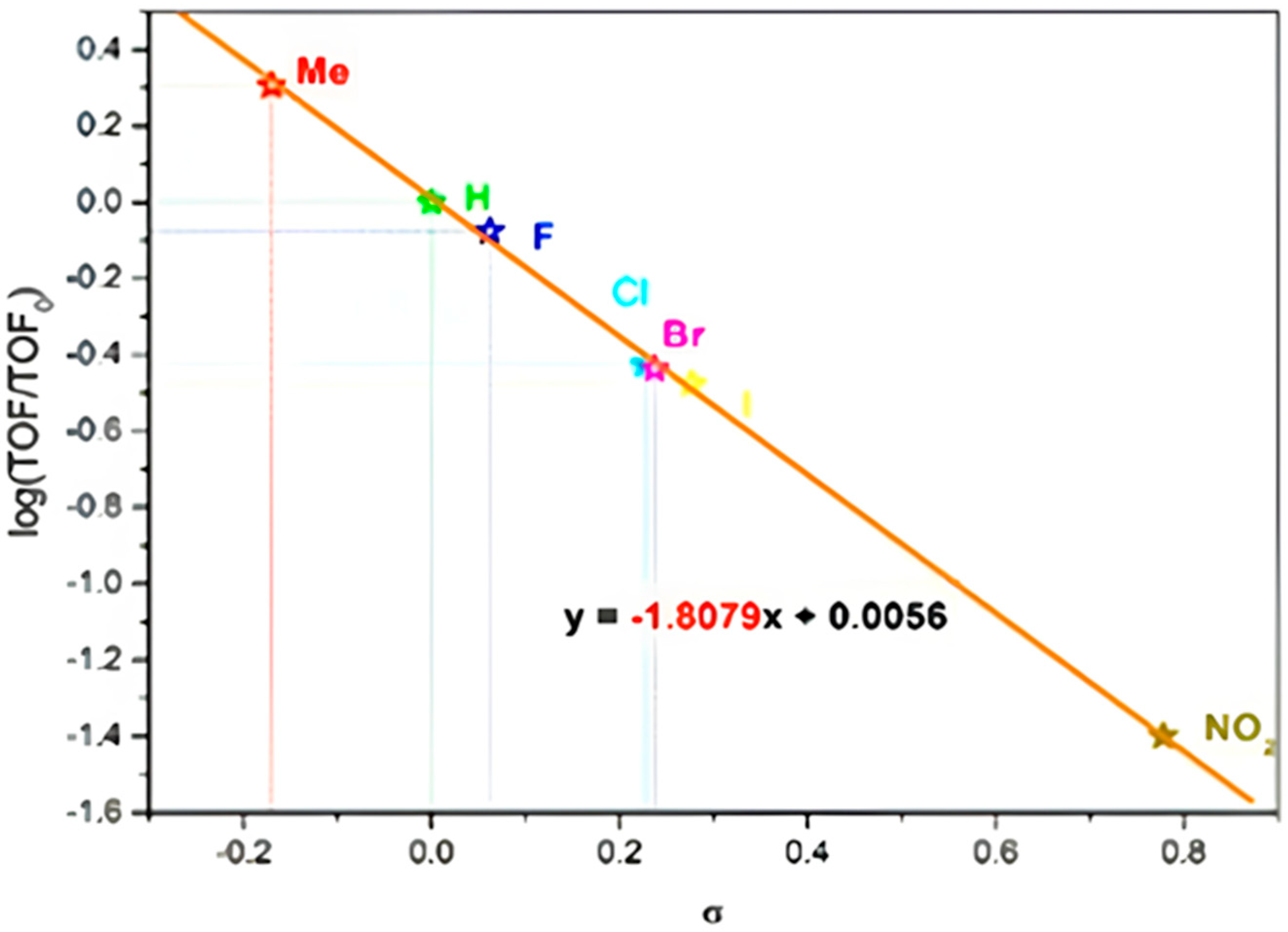
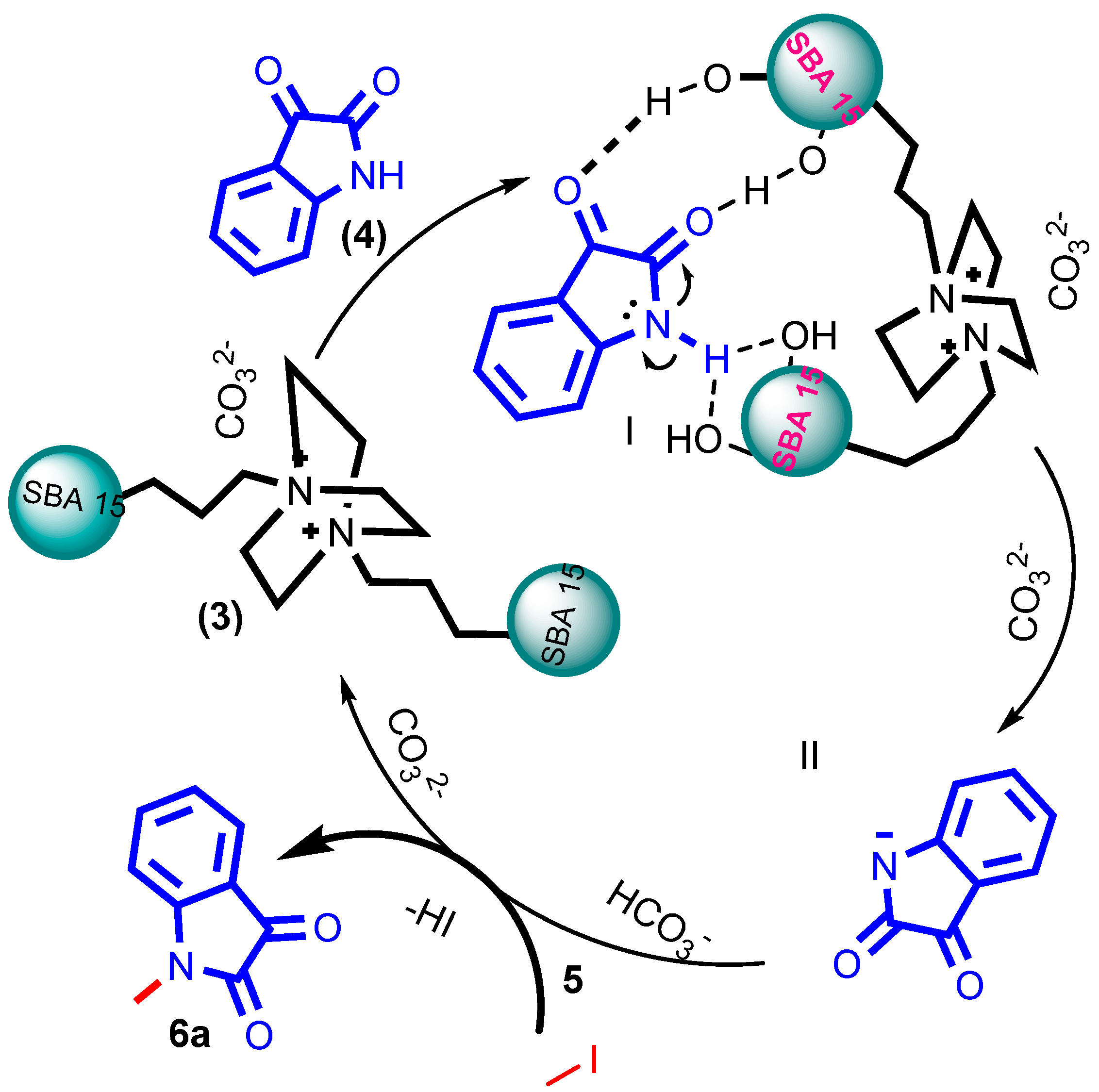
| Sample | BET Specific Surface Area (m2/g) | Pore Volume (cm3/g) | Pore Size (nm) |
|---|---|---|---|
| SBA-15 | 781 | 1.18 | 9.2 |
| DABCOIL@SBA-15 | 421 | 0.79 | 7.8 |
| Entry | Catalyst (Weight %) | Temp (°C) | Solvent | Time (h) | Yield b (%) |
|---|---|---|---|---|---|
| 1 | 10 | 60 | CH3CN | 7 | 89 |
| 2 | 8 | 50 | DCE | 6 | 75 |
| 3 | 7 | 50 | 1,4 dioxane | 6 | 92 |
| 4 | 7 | 50 | Toluene | 6 | 88 |
| 5 c | 6 | 50 | CPMe | 6 | 98 |
| 6 | 4 | 50 | CPMe | 6 | 78 |
| 7 | 2 | 50 | CPMe | 6 | 53 |
| 8 | 6 | 40 | CPMe | 6 | 86 |
| 9 | 6 | 30 | CPMe | 6 | 75 |
| 10 | 6 | 70 | CPMe | 6 | 89 |
| 11 | 6 | 80 | CPMe | 6 | 65 |
| 12 | 6 | 50 | CPMe | 8 | 96 |
| 13 | 6 | 50 | CPMe | 5 | 70 |
| 14 | 6 | 50 | Neat | 8 | 5 d |
| 15 | 6 | 50 | CPMe | 5 | 8 e |
| Catalyst Cycles | 1 | 2 | 3 | 4 | 5 | 6 | 7 |
| Yields % | 98 | 98 | 97 | 96 | 95 | 94 | 92 |
Disclaimer/Publisher’s Note: The statements, opinions and data contained in all publications are solely those of the individual author(s) and contributor(s) and not of MDPI and/or the editor(s). MDPI and/or the editor(s) disclaim responsibility for any injury to people or property resulting from any ideas, methods, instructions or products referred to in the content. |
© 2024 by the authors. Licensee MDPI, Basel, Switzerland. This article is an open access article distributed under the terms and conditions of the Creative Commons Attribution (CC BY) license (https://creativecommons.org/licenses/by/4.0/).
Share and Cite
Siddan, G.; Solomon, V.R. Synergic Effects of Ordered Mesoporous Bifunctional Ionic Liquid: A Recyclable Catalyst to Access Chemoselective N-Protected Indoline-2,3-dione Analogous. Catalysts 2024, 14, 629. https://doi.org/10.3390/catal14090629
Siddan G, Solomon VR. Synergic Effects of Ordered Mesoporous Bifunctional Ionic Liquid: A Recyclable Catalyst to Access Chemoselective N-Protected Indoline-2,3-dione Analogous. Catalysts. 2024; 14(9):629. https://doi.org/10.3390/catal14090629
Chicago/Turabian StyleSiddan, Gouthaman, and Viswas Raja Solomon. 2024. "Synergic Effects of Ordered Mesoporous Bifunctional Ionic Liquid: A Recyclable Catalyst to Access Chemoselective N-Protected Indoline-2,3-dione Analogous" Catalysts 14, no. 9: 629. https://doi.org/10.3390/catal14090629
APA StyleSiddan, G., & Solomon, V. R. (2024). Synergic Effects of Ordered Mesoporous Bifunctional Ionic Liquid: A Recyclable Catalyst to Access Chemoselective N-Protected Indoline-2,3-dione Analogous. Catalysts, 14(9), 629. https://doi.org/10.3390/catal14090629







